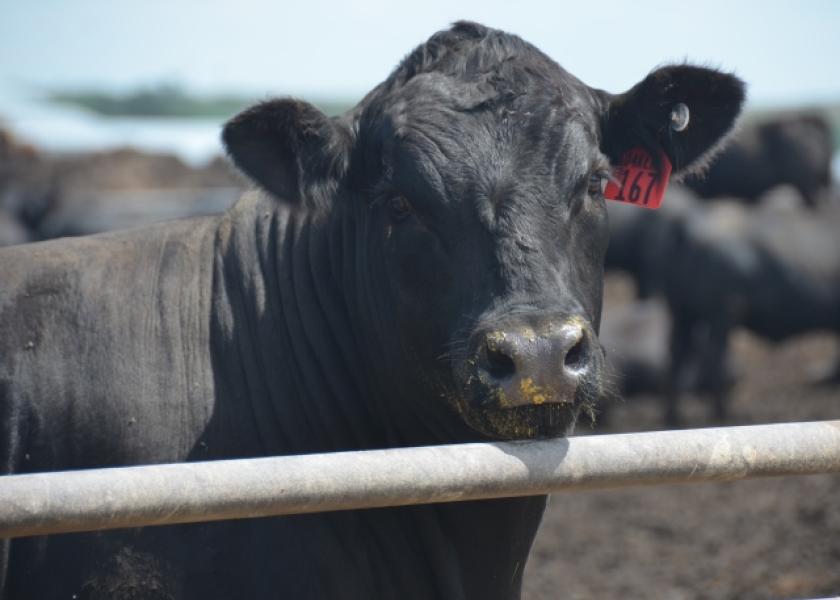BeefTalk: May Calves Put 1,610 Pounds of Beef on the Market

By: Kris Ringwall, Beef Specialist, NDSU Extension Service
What is the bottom line for an Aug. 1 bull turnout?
For openers, the answer is a 1,610-pound steer at harvest 22 months later with a carcass value on the rail of $2,224 and a return to the cattle producer of $896 after subtracting cow costs. Wow! We’ve seen some good numbers during the last three years of good markets.
Plus, the calving season is more relaxed with an Aug. 1 bull turnout. In fact, one could say excessive calving work went away. Those long pre-calving prep sheets got a lot shorter.
Now that calving is over and the bulls are turned out, cows need to be fertile and cycling while nursing the aggressive growth of this year’s calf crop. Bulls need to be ready, conditioned and willing to breed.
Breeding cows is not easy; risks are fairly high. Plans need to be ready to handle any issues regarding bull health, structure and stamina. Already, two bulls have been pulled at the Dickinson Research Extension Center: One was due to injury or fatigue and the other was due to questionable breeding activity.
This the fifth August breeding season at the center. No issues have surfaced regarding late-summer breeding. All the too hot, too dry, too whatever reasons not to August breed never have materialized.
So is this a good business proposition in the bigger picture of the cattle industry, or what? Obviously, not all the work goes away because calves need to be processed at branding, and the usual pasture routines and cattle movement need to be implemented.
The calves have done well throughout the year and, as noted many times, producers need to be prepared to make up the difference in less time in summer pastures for the May-born calves. How does one do that? At the center, May calves follow all the traditional pasture turn-in dates and pasture-removal dates, plus slightly later weaning times. In fact, the center may settle on an early December weaning time.
For the last few years, the center has been monitoring the calves. The center runs two cow herds: One is a larger-frame-based herd and the second is a smaller-framed set of cows. Although the smaller-framed cows have done well, that set of calves will be reserved for a later discussion.
But let’s look at those calves that are more reflective of the typical calf in the upper Great Plains region. Three years of data (2012 to 2014) collected by Songul Şenturklu and Doug Landblom, animal scientists at the center, show steer calves traditionally have been weaned at 567 pounds in the fall and overwintered with an average daily gain of 1.3 pounds.

To evaluate how the steer calves should be handled, half of the steers were turned out to grass in early May as yearlings weighing 780 pounds, and half were sent to the feedlot.
Let’s first look at the grass-fed cattle, which came off summer grass in mid-August at 1,047 pounds and subsequently grazed a field of pea-barley intercrop followed by unharvested corn. The steers weighed 1,230 pounds by late fall. At that time, they were sent to the feedlot for 82 days on feed and were harvested at 1,610 pounds.
The three-year average carcass value was $2,224, returning $896 after subtracting cow costs. Those are some exceptional numbers and are very reflective of the positive outcomes many cow-calf producers were experiencing during that same time.
The steer calves sent to the feedlot in May spent an average of 218 days on feed. Those steers were harvested at 1,516 pounds, for an average carcass value of $2,073, returning $620 to the center after subtracting cow costs.
In today’s environment, cattle producers would have difficulty complaining about either set of calves. But current price declines will lower the market value of the carcasses considerably. So if we were to redo this study this year, the dollar values would be considerably reduced.
While the center’s beef cattle operational plan is not for everyone, everyone could do the center’s beef operation if he or she set a goal down the road, and perhaps a rather long road, and do what the center does.
By switching the cow herd to an easier calving period (bull turnout Aug. 1), opportunities are created to capture the value of later-born calves. This means implementation of a backgrounding phase within the beef operation. This phase, when appropriate, opens the door to maintaining the calves in a summer grass program, followed by extensive grazing of summer cereals, standing corn and assorted cover crops.
At that point, the center had 1,230-pound steers to sell. Annual cow costs, plus the winter, summer and fall grazing of the calves, are budgeted at $1,000. The goal remains: Produce beef at a production cost that will provide a profit. Today’s calf market still should bring a positive return for these cattle.
The next goal is to continue to reduce the daily cost of the cattle production at the center. Managerial skills and production logic should get the job done. More later! I hope these numbers trigger some thoughts that move the beef business forward into a strong future.
May you find all your ear tags.







